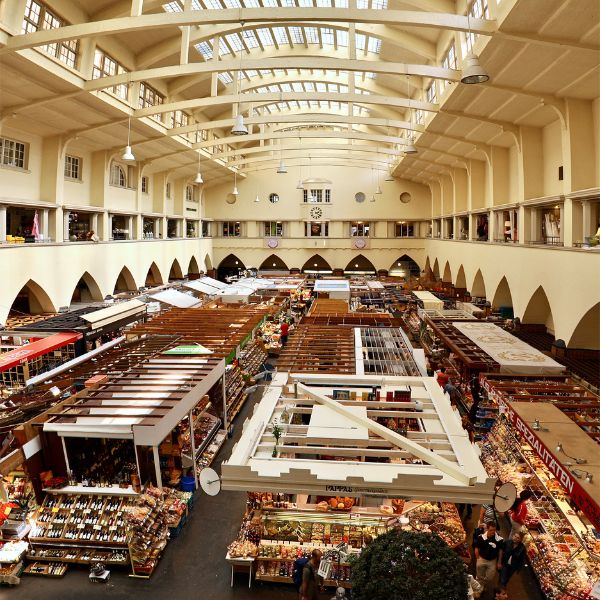Warm up this winter with Oma's newest cookbooks - available on Amazon >>
- Home
- Top German Cities To Visit
- Things to do in Stuttgart
Top Things to do in Stuttgart: More Than Just Fast Cars
By: Eran Fulson / Traveler, writer, and curious observer of all things German.
Stuttgart is the sixth-largest city in southwest Germany. Not only is it a manufacturing hub for Mercedes-Benz and Porsche, but this city is also one of innovation, culture, and royalty.
There are a variety of world-class museums and critically acclaimed cultural attractions to pick from. All of which will help make your list of things to do in Stuttgart quite a lengthy one.
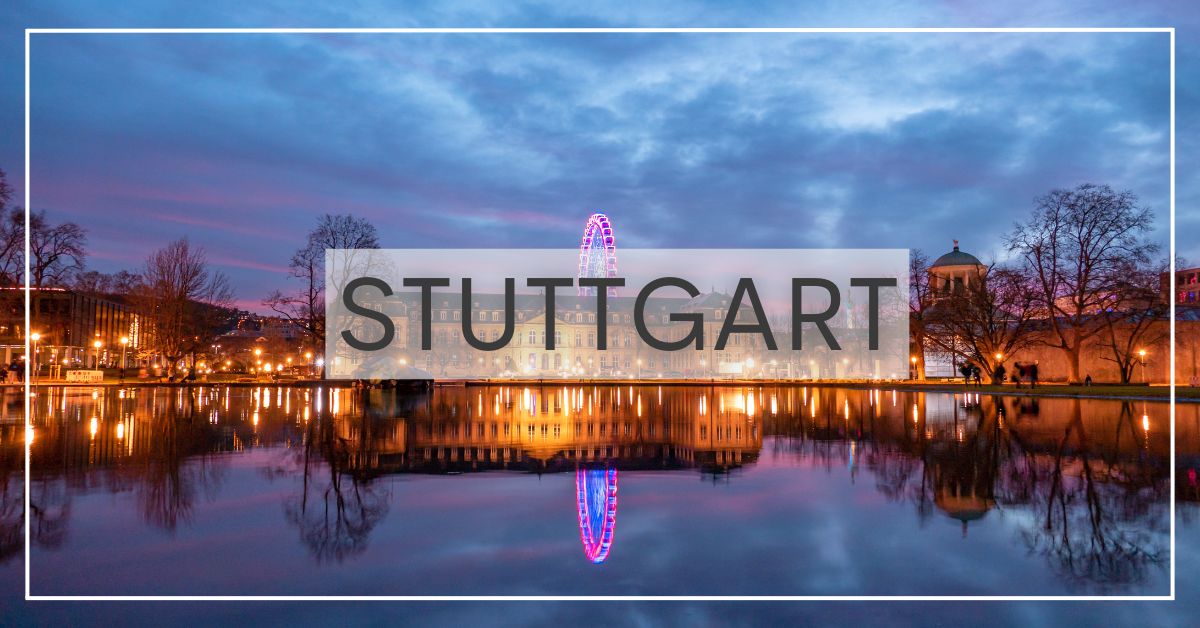
On this page:
When you need to unwind, the Neckar River and many beautiful parks throughout the city offer a healthy amount of green space to relax in.
The rich agricultural environment of the Neckar Valley has seen many cultures make use of the nutrient-enriched soil over the centuries. Notably, the Romans built a large military camp near Bad Cannstatt in 83 A.D., making the area an important regional epicenter.
In addition to farming crops, horse breeding became ingrained in the local culture. Stuttgart was under the rule of Liudolf, Duke of Swabia, in 1320 before giving way to the House of Württemberg in the 15th century.
Today you’ll see numerous landmarks of the Württemberg royalty as they transformed a town into a prosperous city.
Getting There
Regardless of your method of transportation, the hub of activity that Stuttgart is makes getting in more than easy. Stuttgart Airport (STR) is only eight miles from the city center and easily accessible by train.
And speaking of trains, there is a high-speed rail line between Frankfurt and Stuttgart, as well as daily services to most major European cities.
As with most major German cities, city cards are a great way of getting around, with the added perks of discounts to many attractions and things to do in Stuttgart. Find it here.
Driving in is also easy via the two main highways. However, with the caveat that driving in the city of Stuttgart during the morning and evening rush hour can be a bit of an experience. Where possible, getting around via public transport is recommended.
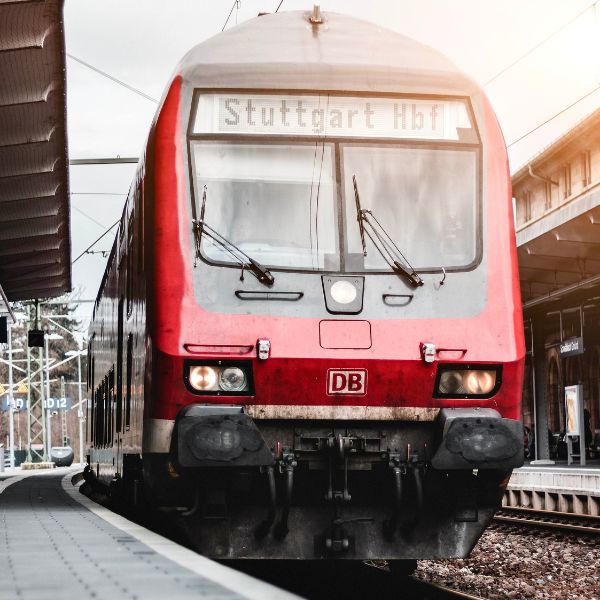
Staying There
We've partnered with Stay22 to help streamline your holiday booking experience. Using the interactive map below, find your next home away from home. Also added are points of interest that we cover in this post.
Attractions
Mercedes-Benz Museum
This is for the car lovers. Stuttgart is the home and birthplace of one of the world’s most recognizable automotive brands. And the Mercedes-Benz Museum contains everything you could want on the matter.
Though many inventors were devising their own versions of an automotive vehicle, Gottlieb Daimler paved the way with his small, high-speed internal combustion engine from his garden shed in 1883.
Daimler was joined by Carl Benz in 1886, and the pair launched what is now Mercedes-Benz.
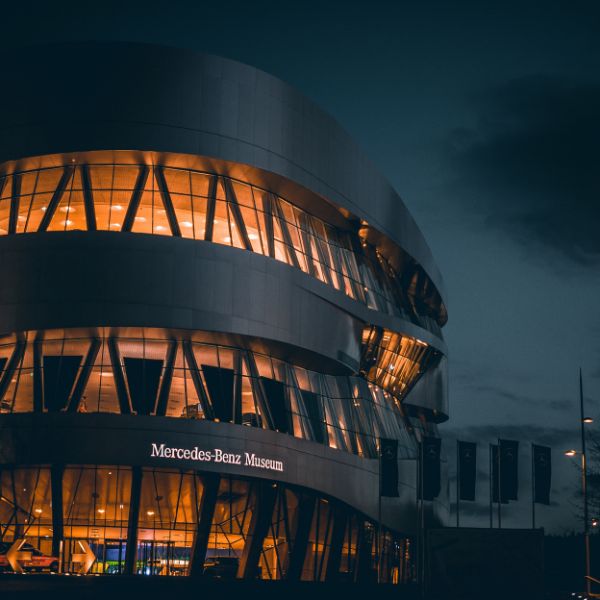
The museum itself is a feat of engineering and as impressive as the cars showcased inside. Fabricated in a double-helix design, the building wraps around, offering multiple views of exhibits as you make your way up.
Porsche Museum
Perhaps it’s symbolic to have two competing manufacturers on the road trying to edge each other with a little museum flex.
The Porsche Museum is built around 6,000 tons of steel, resembling a futuristic spaceship rising from the ground. Inside, it contains more than 80 vehicles across 200 exhibits as it embraces the company’s car history.

Porsche has been manufacturing cars in Stuttgart for more than 70 years, with their headquarters and factory right next to the museum.
You can also take a guided tour of the factory where these models of high performance come together with the precision synonymous with their reputation.
And the Rest is History
The Landesmuseum Württemberg (State Museum of Württemberg) is the epicenter of cultural history in Baden-Württemberg. Positioned fittingly in the Old Castle, you'll find highly acclaimed exhibits detailing Württemberg’s archeology along with art and cultural history.
Notable collections include some of mankind’s oldest artistic creations. From a lion’s head carved out of a mammoth ivory tusk to grave decorations of Celtic royalty and crown jewels from the Kingdom of Württemberg.
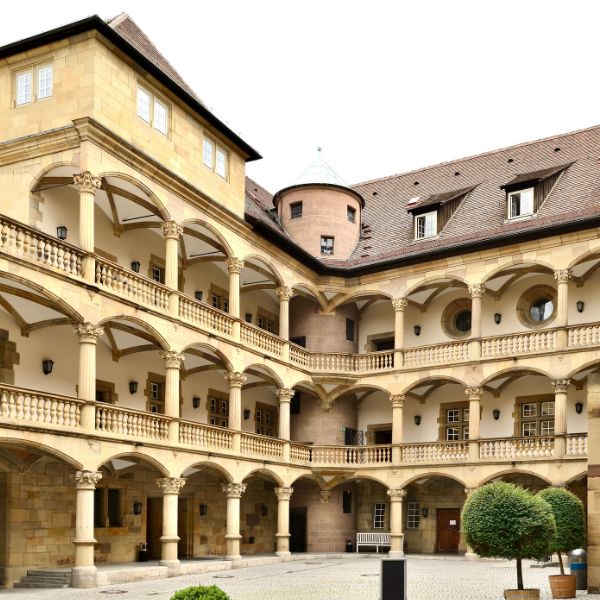
You’ll find a recurring trend among museums and castles in Germany; they’ll often go together like a fish in water. Landesmuseum is no different since taking up residence in 1948 within the halls of the Altes Schloss (Old Castle).
Dating back to 950 A.D., the Old Castle was built to protect a stud farm (from which Stuttgart takes its name).
Inventors of Stuttgart
Many of our modern conveniences have their origins traced back to Stuttgart. In fact, 'conveniences' may even be putting it mildly, as life would be very different without the following innovations:
- 1870 - Wilhelm Fein created the electric fire alarm.
- 1883 - Gottlieb Daimler gave us the petrol engine.
- 1888 - Robert Bosch invented the spark plug.
- 1895 - Wilhelm Fein then invented the electric hand drill.
- 1912 - Sigmund Lindauer created the first modern brassiere.
- 1926 - Andreas Stihl designed and patented the first chainsaw.
- 1935 - Alfred Karcher developed Europe’s first hot-water pressure washer.
- 1955 - Fritz Leonhardt's reinforced concrete TV tower is the first of its kind.
Culture Shock
The Staatsgalerie Stuttgart (Stuttgart State Gallery) is among the largest art museums in Germany and, as such, encompasses genres from every corner.
Paintings and sculptures from a collection accumulated over 175 years showcase the best of the Middle Ages to internationally acclaimed modern art.
Old masters such as Henri Matisse and Picasso take up humble residence alongside Salvador Dalí and guest appearances by new artists like the British street art prodigy Banksy.
Though badly damaged during air raids in World War II, following a rebuild and additions, it now stands at 3 acres (12,000 square meters) of exhibition space, spanning 800 years of artistic history.
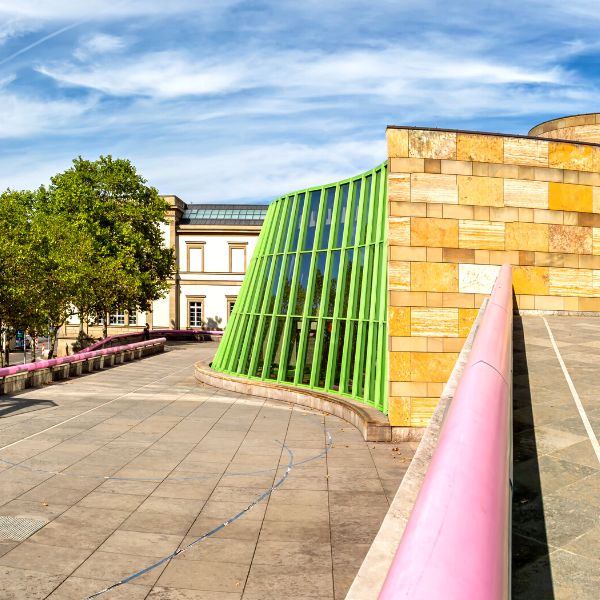 I don't know art, but green is definitely a colour.
I don't know art, but green is definitely a colour.Tip-Toe Flow
You couldn’t do much better for a cultured evening than at the Staatstheater Stuttgart (Stuttgart State Theatre). The Staatstheater is a combination of three venues dedicated to opera, theater, and ballet.
The opera house was one of the few in Germany to survive the Second World War fully intact. Today, the Stuttgart Opera is considered one of the most popular in Europe, with performances playing regularly throughout the year.
Though the origins of the State Theatre date back over one hundred years, behind the historical decor lies a plethora of modern technology. Among the mod-cons are a completely silent air conditioning system and a future-proof audio system residing in the background to make your experience as comfortably immersive as possible.
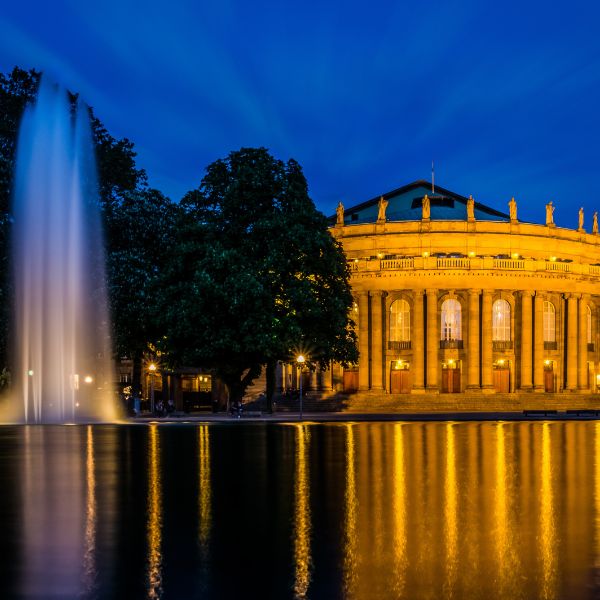
Not only is Staatstheater committed to traditional world-class theater, but it has also built a reputation for bringing experimental performances and emerging artists to the forefront.
However, in keeping with its noble beginnings, the Stuttgart Ballet is highly regarded as one of the most prestigious in Germany.
Notably, the Opera House is a previous six-time recipient of Opera House of the Year and ten-time Opera Choir of the Year, while the Staatsorchester also has an “Orchestra of the Year” to its credit. If you're looking for an evening of high-cultural things to do in Stuttgart, this is it.
Housing Modernity
I am under no illusion that this next location will rank up against the castles my co-writer and niece, Lydia, is covering. They are pure grandeur in their own right.
However, a rather large caveat needs to be given to the Weissenhof Estate for its many contributions to much of how we live today. Don’t take my word for it; in 2016, the estate became a UNESCO World Heritage Site for its contributions to modern development.
Though relatively unassuming, these white, boxy houses look like any other new-build estate. However, the Weissenhof Estate quite literally broke ground in 1927 as a monument to architectural modernism.
Walter Gropius was a German architect and a pioneer in modern building design who teamed up with architects Mies van Der Rohe and Le Corbusier to promote a change in construction behavior.
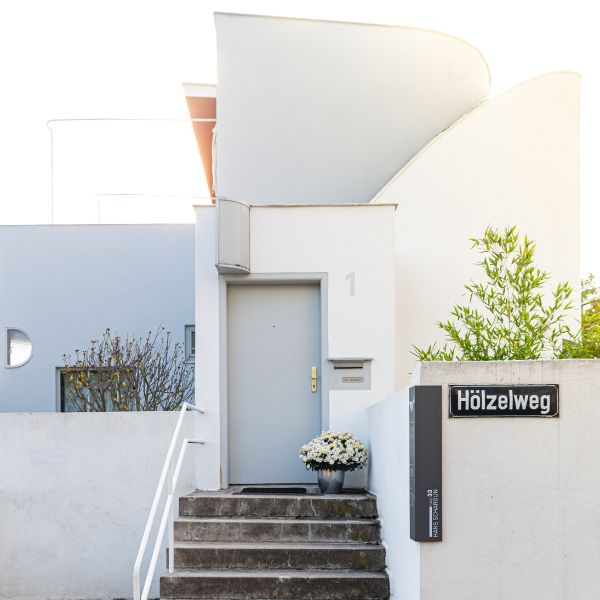
The complex consisted of sixty-three apartments in twenty-one houses as a socialist alternative to the typical housing slums in cities around the world. A strong emphasis was placed on simple geometric designs, bright living spaces, and landscaped surroundings intended to promote a healthy lifestyle.
Dubbed the New Construction Movement, steel frames and prefabricated panels made up the bulk of assembly and ushered in new methods to construct housing for the general population.
Received to high acclaim, the estate was built in just twenty-one weeks.
As time went on, the estate had fallen into disrepair even before a barrage of allied bombs destroyed half of the buildings. By the 1950s, a preservation order was given and full restoration was completed in the early 1980s.
Original Lux
You’ll find in the vast majority of these articles that a great deal of Germany’s history succumbed to events during the first and second world wars (though, arguably, the second was extensively more destructive).
Though meticulous care has been given to restoring many landmarks to their original glory, finding one completely unscathed is no easy task.
Presenting - Ludwigsburg Palace. The largest Baroque palace in Germany started as a moderately humble hunting lodge in 1704 before becoming the opulent summer residence of the first King of Württemberg.
The transformation included adding three more wings to the palatial complex and seamlessly combining Rococo, Baroque, and Neoclassical styles into the interior.
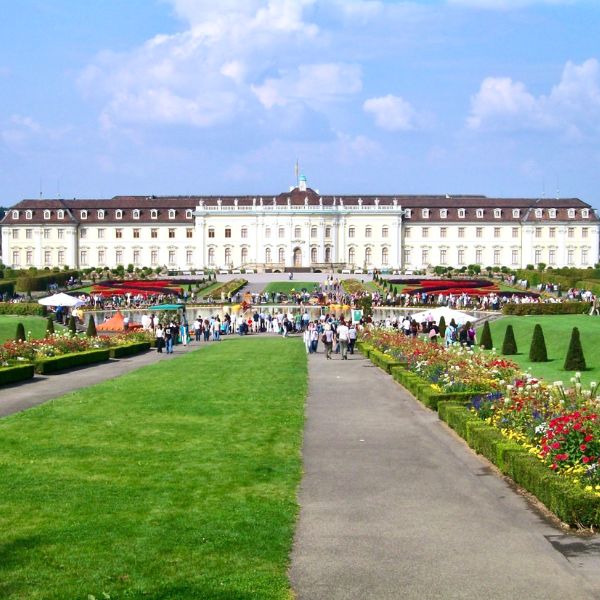
These days, the Ludwigsburg Palace is a popular destination for visitors to see the beautiful gardens as they were laid out in the 1800s.
Walk through the grandeur of Württemberg royalty as you take in the Schlosstheater (Palace Theatre) in the eastern wing, complete with original stage machinery and decoration while being heralded as one of Europe’s oldest theatres.
A thirty-minute drive from Stuttgart to Ludwigsburg makes this a perfect day trip destination. Go for the palace, stay for the pumpkins.
You read that right. Pumpkins. This wouldn't be one of the typical things to do in Stuttgart, but it makes for quite an entertaining time.
It seems a random pairing that the largest Baroque palace in Germany also hosts the world’s largest pumpkin festival, but there you have it.
Approximately 500,000 pumpkins take up their place as landscaped fauna and statues. Oh, and there's a pumpkin regatta. Even Oma couldn't resist.
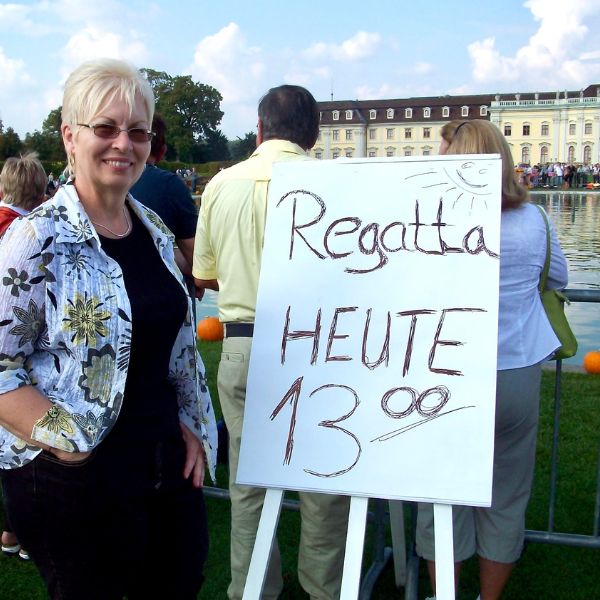 Oma getting ready for the regatta.
Oma getting ready for the regatta.Try the Pumpkin Bread, Pumpkin Streusel, Pumpkin Prosecco, and Pumpkin Ice Cream. Seriously. They love their pumpkins.
*Disclaimer* I have no affiliation with Pumpkin Festival, nor am I paid for the number of times I use the word ‘Pumpkin’ in an article. But this moment will never happen again (hopefully) in my lifetime, and life is fleeting for the dull.
Standing Tall
The capital of the state of Baden-Württemberg may be the birthplace of the automobile as we know it, however, it also holds another accolade of distinction, the Fernsehturm Stuttgart (Stuttgart TV Tower).
Television signals were notoriously spotty in the 1950s and only functioned when given a clear line of sight between the mast and receiver. Originally, a simple steel mesh tower was proposed on the Hohe Bopser, 928 feet above Stuttgart.
Master builder and consultant civil engineer for bridge construction, Fritz Leonhardt, proposed a new design drawing from his civil experience. Drawing from his experience of building bridges, the use of reinforced concrete in such a slender and vertical design had simply never been done before. His plans called for a lookout tower complete with a café, as opposed to a purely functional structure.
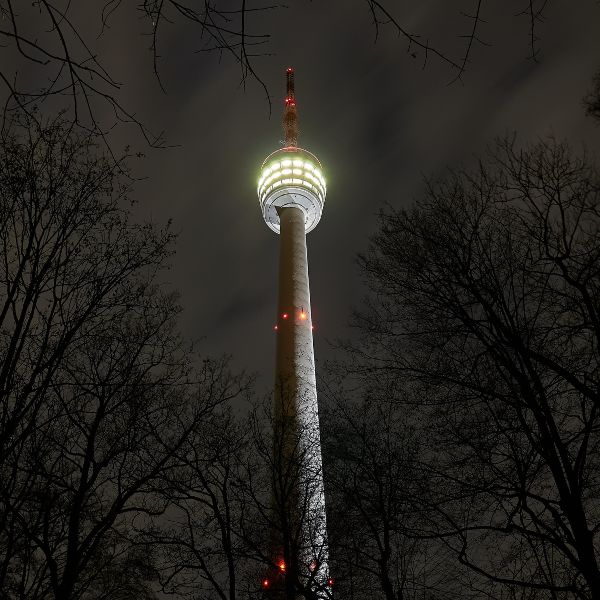
On October 29, 1955, the tower was completed and has since withstood the test of time and the elements. Today, there are numerous examples of Leonhardt’s design all over the world.
Although no longer a functioning TV tower, the Panorama Café is still going strong along with the addition of Restaurant Leonhardts, which also takes full advantage of the view.
A viewing platform, 492 feet above the ground, offers one of the best places for impressive views of the Neckar Valley, Stuttgart, and the Black Forest.
Where o’ Wares
The Stuttgarter Markthalle (Stuttgart Market Hall) has been a mainstay of the city since 1304. Three iterations have happened since then, but the core function of the hall has never changed.
Serving as a hub of goods and services, the Markthalle has grown from its early days as a large, half-timbered building to an iron structure with a glass roof four hundred years later. Quickly outgrowing its space, a new concrete building was erected in its place.
In keeping with the architectural surroundings, a contemporary art nouveau style was laid out on the exterior. The interior was given a modern touch with a curved glass roof above the hall, spanning 196 feet long by 82 feet wide.
Willkommen Wilhelma
Common in the 1800s were opulent playgrounds for the rich and famous. The Wilhelma is no exception. What we know today as the Wilhelma Zoo and Botanical Gardens began as a large park called Rosensteinpark in the 1820s.
King Wilhelm I later adapted the park into a wellness complex and bathhouse upon the discovery of mineral springs found below. The bathhouse was later replaced with a residence, a royal theater, and two adjoining greenhouses, and later took on the name Wilhelma.
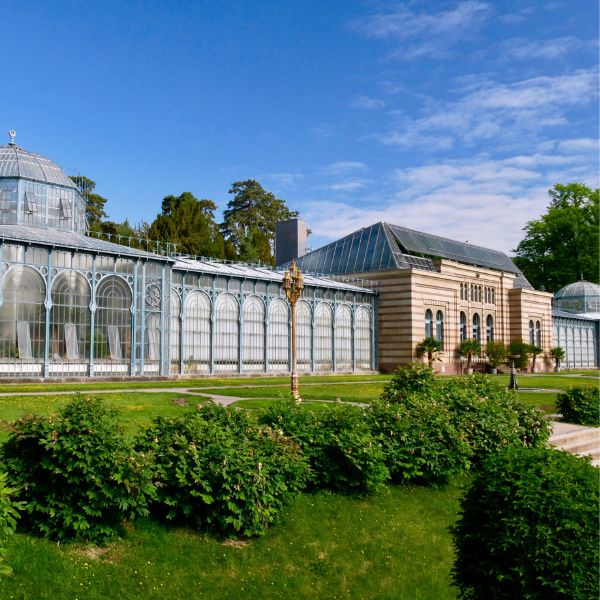
Extensions were added over the next fourteen years, giving the residence a Banqueting Hall, Conservatory, and Gallery Building. The Wilhelma became state property in 1919 after the monarchy ended and transitioned into a botanical garden.
All in all, it took nearly one hundred years before the public was finally allowed in. The first animals started arriving at the Wilhelma in 1952, and it then became a zoological-botanical garden.
Historical Facts
The first animal resident of the Wilhelma Zoo was Vilja, an Asian elephant who was over 60 before she died in 2010.
There have been numerous additions to the Wilhelma Zoo since its inception. Today, among the 11,000 animals are giraffes, orangutans, penguins, and an aviary.
Kids can interact with some of the select resident mammals at the children’s farm and petting zoo. With nearly two million yearly visitors, the Wilhelma is one of the most popular tourist attractions in Stuttgart and the only zoological-botanical garden in Germany.
Forest Beyond the Trees
Known for its manufacturing prowess and host of things to do in Stuttgart, beyond the glass and concrete lies one of the most well-known forests in the world, the Black Forest.
Ominous in name, yet, enchanting in view. The Romans called it the Black Forest due to the dark green conifers that densely packed the mountain range, omitting any light from below the treetop canopy.
Known in Germany as Schwarzwald, the Black Forest is the home of the cuckoo clock and the inspiration for fairy tales such as Hansel and Gretel, Rapunzel, and Sleeping Beauty. A vast array of wildlife proliferates in the forest, living under the canopy of the largest protected nature reserve in Germany.
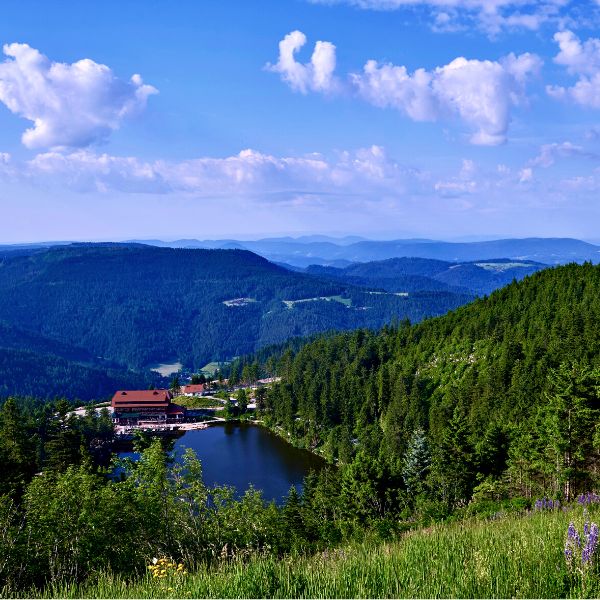
The Black Forest has easy access from Stuttgart via driving in or by public transportation. Given the chance, go for a drive along the Schwarzwaldhochstrasse (Black Forest High Road).This road takes you through the mountains, valleys, and forests in the region with sublimely breathtaking views.
Getting Festy
There have been almost two hundred occurrences of the Cannstatter Volksfest with the first taking place in 1818. King Wilhelm I first implemented the idea to help revive Stuttgart after the economic damage of the Napoleonic Wars.
Is it surely no coincidence that his birthday was the day before? Nah…
Known as one of the biggest funfairs in Europe, around 4 million people will visit the Cannstatter Volksfest. The festival kicks off shortly after Oktoberfest, near the end of September.
Drawing comparisons to Oktoberfest, this event is also effectively known as the Stuttgart Beer Festival - but with added rides. The Volksfest Parade on the first Sunday of the seventeen-day fun binge is definitely one of the biggest draws.
Over 250,000 spectators will line the streets and around 500,000 will watch on regional television.
Not to be outdone by the parade’s largeness is the famous Steiger Ferris Wheel. The wheel achieved fame by being the world’s tallest transportable wheel in 1980, measuring up to 200 feet.
Though that record has now since been broken, the 450-ton wheel still stands tall during the Cannstatter Volksfest and, given the chance, is definitely worth a spin.
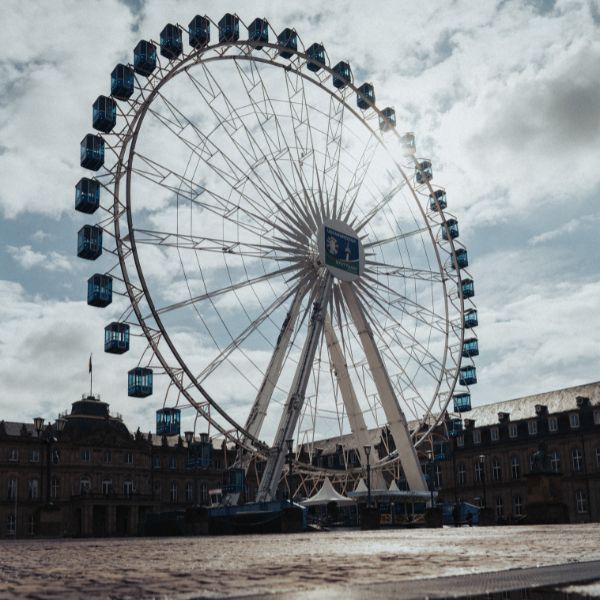
Food and Drink
The local food in Stuttgart still draws influence from its closeness to Swabia. Swabian cuisine leans into its hearty flair for pasta, and saucy, brothy dishes.
Spätzle is a type of noodle commonly found as an accompaniment to meat and lentil dishes. Also typically Swabian are Maultaschen, basically large ravioli filled with meat, spinach, and onions.
Legend has it that the monks from Maulbronn Monastery saw Maultaschen as a way of skirting around the ban on eating meat during Lent. Their view was that God would only see noodle ‘purses’ and fail to see the meat inside.
Though I’m sure any parent can only be amused at such a childish attempt at being clever, but you have to give them credit for thinking outside the box.
Stuttgarter Weihnachtsmarkt
There are few better things to do in Stuttgart than to join in with the annual Stuttgarter Weihnachtsmarkt (Stuttgart Christmas Market). Not only my opinion, but that of the 3.5 million other visitors who travel here to experience one of Europe's oldest Christmas markets.
It was first officially recorded in 1692, with earlier autumnal markets noted in 1507, which eventually drew closer to the festive markets we have today.
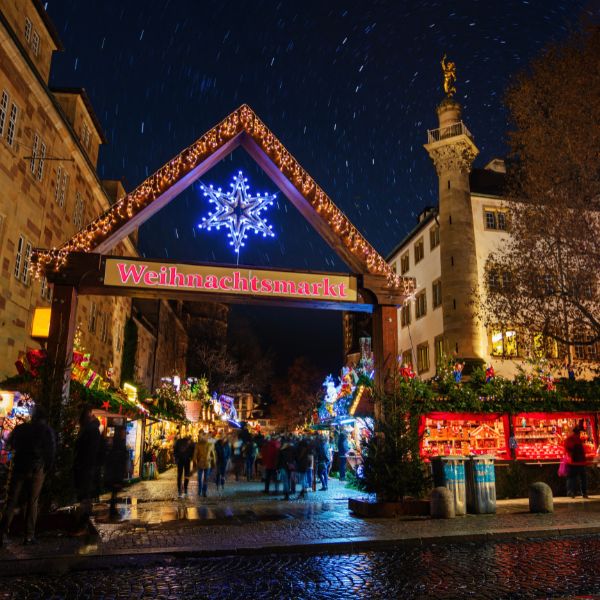
These days, there are four markets in the Stuttgart city center, festively taking up residence in the Schlossplatz, Schillerplatz, Karlsplatz, and the Marktplatz. There are approximately 300 stalls offering a range of arts and crafts, jewelry, and international culinary delicacies.
However, far more than shopping, the entertainment program offers something for the whole family as well: a mini steam locomotive and nostalgic carousels in the children’s fairyland, daily live concerts, and a host of hands-on activities are sure to keep everyone captivated.
Final Thoughts
While Stuttgart may not have the architectural grandeur of its rivals, it does contain a wealth of significant cultural experiences. It is also the birthplace of many inventions and prototypes that contributed to the life we live today.
With plenty of activities for kids, cars for the motorheads, and numerous green spaces to lose yourself in (ideally in a metaphorical sense), there are plenty of things to do in Stuttgart to make it worth a visit.
When was Stuttgart established?
When was Stuttgart established?
Stuttgart was established in 950 A.D.
What is the land area of Stuttgart?
What is the land area of Stuttgart?
80.05 sq mi
What is the population of Stuttgart?
What is the population of Stuttgart?
635,000 (2022)
What is the GPS location of Stuttgart?
What is the GPS location of Stuttgart?
48°46′39″N 09°10′48″E
What are the closest major cities to Stuttgart?
What are the closest major cities to Stuttgart?
Karlsruhe 38.7 mi
Mannheim 58.3 mi
Strasbourg, France 66.7 mi
Frankfurt 94.8 mi
Nuremberg 97.6 mi



